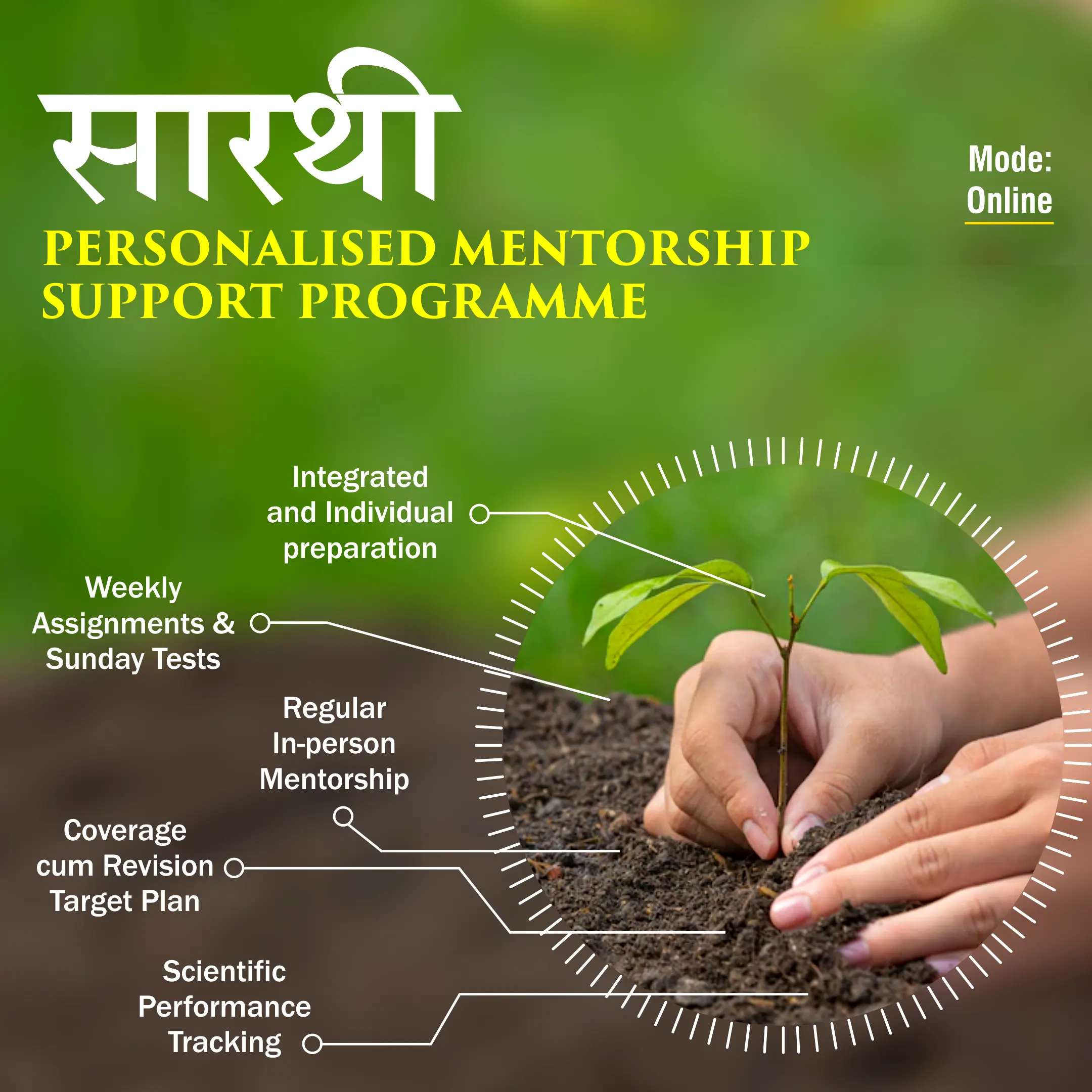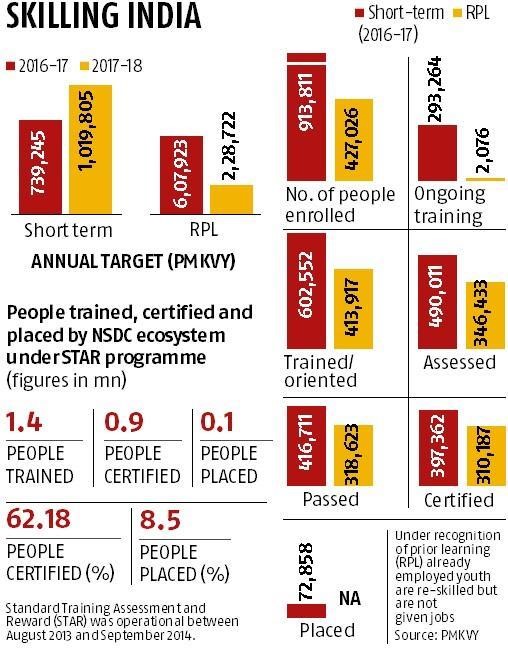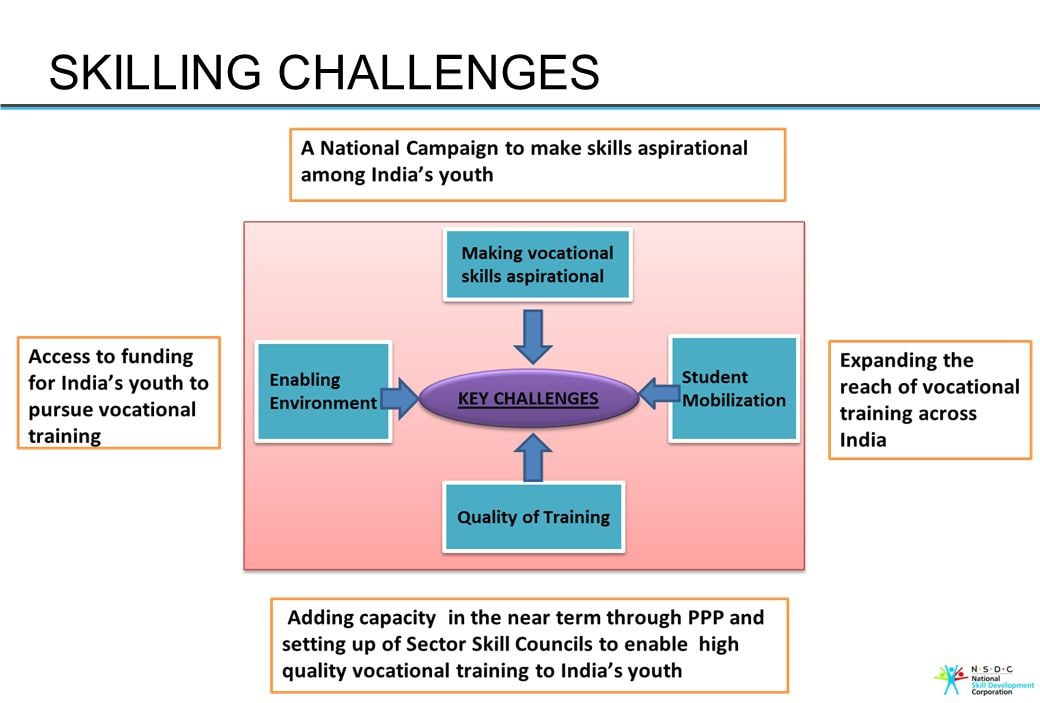PERSPECTIVE: SKILLING INDIA FOR THE WORLD

Disclaimer: Copyright infringement not intended.
Context
- Recently, Prime Minister Narendra Modi asserted India's capability to emerge as a leading supplier of skilled workforce across the world.
Details:
- Our nation’s journey towards becoming a global economic powerhouse hinges on tapping the potential of its skilled manpower.
- This will not only enable India to take advantage of its demographic dividend but will also accelerate its economic growth as it moves towards becoming the third-largest economy in the world by the turn of the decade.
- Technological transformation and innovation have brought about huge changes like jobs and skills in demand. This opens a new window of opportunity but comes with its own set of challenges.
- The government of India is working on partnerships with various countries in need of skilled workforce, as part of its multi-pronged strategy to train and supply skilled Indian workers across the globe.

INTRODUCTION:
- Skill India is a flagship initiative of the Government of India that aims to train and develop the skills of millions of Indians and make them employable or self-reliant in various sectors of the economy.
- It was launched in 2015; Skill India is one of the world's largest skill development programs that involve multiple stakeholders such as central and state governments, industry associations, educational institutions, civil society organizations, and foreign partners.
- The vision of Skill India is to create a skilled workforce that can contribute to the economic growth and social development of the country.
- India is a young nation with more than 60% of its population in the working age group (15-59 years) and more than 54% below the age of 25 years. This demographic dividend offers a great opportunity for India to become a global leader in various sectors.
- However, it also poses a huge challenge as only a small fraction of the workforce has formal vocational training or skills.
- According to the National Sample Survey Office (NSSO) report, only 2.2% of the workforce aged between 15-59 years had received formal vocational training and 8.6% had received non-formal vocational training. This means that more than 89% of the workforce lacked any kind of skill training.
- The low level of skill development in India is attributed to various factors such as;
- Lack of awareness, access, quality, relevance, and recognition of vocational education and training.
- Inadequate infrastructure and resources.
- Poor linkages between industry and academia.
- A mismatch between demand and supply of skills.
- The social stigma attached to vocational education.
- Low participation of women and marginalized groups in skill development.
- To address these challenges and harness the potential of the youth, the Government of India launched the Skill India Mission in 2015 with an ambitious target of skilling at least 300 million people by 2022.
Evolution of Skill India Initiatives:

Background and Need for Reform:
- The traditional education system in India, while focusing on academic excellence, often fell short in preparing students for the practical demands of the job market. Recognizing this gap, the government initiated the National Policy on Skill Development in 2009, highlighting the need for a more skill-centric approach to education.
National Policy on Skill Development (NPSD), 2009:
- The NPSD, 2009, marked a crucial step towards skill development by emphasizing the importance of job-ready skills. It aimed to align education with industry requirements and included provisions for periodic reviews every five years to ensure its relevance in the dynamic national and international landscape.
Launch of National Skill India Mission (NSIM) in 2015:
- Building on the foundations laid by the NPSD, the government launched the National Skill India Mission in 2015. This initiative sought to streamline and consolidate previous skill development programs, addressing the fragmented nature of existing efforts.
Comprehensive Skill Development Framework:
- The Skill India Initiative introduced a comprehensive framework that encompassed various sectors and industries. It aimed to provide a wide array of skills, ranging from technical expertise to soft skills, making the workforce more adaptable to the evolving demands of the job market.
National Policy on Skill Development and Entrepreneurship, 2015:
- To further strengthen the commitment to skill development, the government implemented the National Policy on Skill Development and Entrepreneurship in 2015. This policy emphasized not only skill acquisition but also the promotion of entrepreneurship, encouraging individuals to create job opportunities.
Addressing Fragmentation and Redundancy:
- One of the key challenges the initiative tackled was the fragmentation and redundancy of existing skill development programs. By centralizing efforts under the Skill India Mission, the government aimed to create a more cohesive and effective skill development ecosystem.
Periodic Reviews for Relevance:
- The commitment to periodic reviews, as outlined in the NPSD, ensured that the skill development initiatives remained aligned with the changing dynamics of the job market. This adaptability was crucial to address emerging trends and technologies.
Industry Collaboration and Partnerships:
- Recognizing the importance of industry input, the Skill India Initiative fostered collaborations and partnerships with businesses. This ensured that the skills being imparted were in line with industry standards and requirements.
Skill development in India:
Skill Development Initiatives:
- India has launched extensive skill development programs to equip its workforce with the necessary expertise. Initiatives like Skill India aim to provide vocational training, enhance employability, and bridge the gap between education and industry requirements.
Information Technology and Software Skills:
- Recognizing the global demand for IT professionals, India has focused on enhancing software development, coding, and IT skills. This has positioned the country as a leading provider of skilled IT professionals to the world.
English Language Proficiency:
- Given the global nature of business and communication, emphasis has been placed on improving English language proficiency. This enhances the international employability of the Indian workforce, particularly in sectors like customer service and business process outsourcing.
Technical and Engineering Skills:
- India has a strong emphasis on technical and engineering education, producing a skilled workforce in fields such as engineering, electronics, and manufacturing. This expertise contributes to India's global presence in industries requiring technical know-how.
Entrepreneurship and Innovation:
- Skilling India for the world includes fostering entrepreneurship and innovation. Programs like Startup India aim to nurture a culture of innovation, enabling Indian professionals to create globally competitive businesses.
Healthcare Professionals:
- With a focus on healthcare, India is producing skilled doctors, nurses, and healthcare administrators. This not only addresses domestic needs but also contributes to the global demand for well-trained medical professionals.
Renewable Energy and Environmental Skills:
- As the world shifts towards sustainable practices, India has invested in skilling its workforce in renewable energy technologies and environmental management. This positions Indian professionals as valuable assets in the global push for sustainable development.
Soft Skills and Cultural Competence:
- Recognizing the importance of soft skills and cultural competence, India is incorporating these aspects into its skill development programs. This prepares the workforce to seamlessly integrate into diverse global workplaces.
Global Collaborations and Partnerships:
- India has actively sought collaborations with international organizations and educational institutions to enhance the quality of its skill development programs. These partnerships facilitate the exchange of knowledge and best practices on a global scale.
Challenges faced:

Quality and relevance of training
- The quality and relevance of the training provided under Skill India are often questionable. Many training providers lack adequate infrastructure, equipment, curriculum, trainers, and assessment systems.
- The training is not aligned with the industry demand and the changing needs of the labor market. As a result, many trainees do not acquire the skills that are required for employment or entrepreneurship.
Access and equity
- The access and equity of skill development opportunities are also uneven across different regions, sectors, and groups.
- There are significant gaps in the coverage and participation of rural areas, women, persons with disabilities, minorities, and other disadvantaged sections of society. These groups face various barriers such as lack of awareness, information, guidance, mobility, affordability, and social norms that prevent them from accessing and benefiting from skill development programs.
Coordination and convergence
- The lack of coordination and convergence among various stakeholders involved in skill development.
- Multiple ministries, departments, agencies, schemes, and programs operate in silos and often overlap or contradict each other. This leads to duplication, wastage, inefficiency, and confusion among the beneficiaries and the service providers.
- There is a need for a coherent and integrated policy framework and a common platformfor collaboration and coordination among all the actors.
Monitoring and evaluation
- The monitoring and evaluation of the skill development programs are also weak and inadequate.
- There is no comprehensive data system that captures the inputs, outputs, outcomes, and impacts of the various interventions. The existing data sources are often unreliable, inconsistent, incomplete, or outdated.
- There is no robust mechanism for feedback, learning, accountability, and improvement. This hampers the evidence-based planning, implementation, and management of skill development programs.
Financing and sustainability
- The financing and sustainability of the skill development programs are also major challenges. The skill development sector requires huge investments in infrastructure development, capacity building, quality assurance, innovation, and scaling up.
- Public funding is limited and often delayed or diverted. The private sector participation is also low and mostly confined to certain sectors or regions. There is a need for mobilizing more resources from various sources and ensuring their efficient and effective utilization.
Some steps that can be taken to promote Skill India:
Create awareness and interest among the target groups
- Create awareness and interest among the potential beneficiaries of Skill India, such as students, school dropouts, women, rural and urban poor, and differently-abled persons. This can be done through various channels such as mass media, social media, community mobilization, workshops, seminars, exhibitions, and roadshows.
- The awareness campaigns should highlight the benefits and opportunities of skilling, such as better jobs, higher income, improved quality of life, and social recognition.
Provide access and affordability to skill training
- Provide access and affordability to quality skill training for the target groups. This can be done by expanding the network of skill development centers, vocational institutes, industrial training institutes, and online platforms across the country.
- The skill training should be aligned with the National Skill Qualification Framework (NSQF) and industry standards. The skill training should also be subsidized or free for the disadvantaged sections of society.
Ensure relevance and quality of skill training
- Ensure relevance and quality of skill training for the target groups. This can be done by involving the industry, academia, and civil society in designing and delivering skill training programs.
- The skill training programs should be based on the current and future market demand and should impart both technical and soft skills.It should also have regular assessment and feedback mechanisms to monitor and improve the learning outcomes.
Facilitate placement and entrepreneurship
- Facilitate placement and entrepreneurship for the skilled workforce. This can be done by creating linkages between the skill training providers and the employers, both in the public and private sectors.
- The placement services should provide career guidance, counseling, job fairs; resume writing, interview preparation, and post-placement support.
- The entrepreneurship services should provide mentoring, incubation, funding, networking, and market access for aspiring entrepreneurs.
Recognize and reward the skilled workforce
- Recognize and reward the skilled workforce for their achievements and contributions. This can be done by providing certificates, badges, incentives, scholarships, awards, and social recognition for skilled workers and learners.
- The recognition and reward system should also encourage continuous learning and upskilling for the skilled workforce.

Conclusion
- The commitment to periodic reviews and the implementation of the National Policy on Skill Development and Entrepreneurship in 2015 reflect the government's dedication to ensuring the relevance and adaptability of skill development initiatives in the face of evolving national and international trends.
- The emphasis on not just job-oriented skills but also entrepreneurship has broadened the scope of India's workforce, fostering innovation and job creation.
- While significant progress has been made, challenges such as scalability, quality assurance, and the need for continuous adaptation to emerging industries persist. The future outlook involves a continued commitment to refining and expanding skill development programs, harnessing industry collaborations, and embracing technological advancements.
- Skilling India for the world is not merely a policy initiative; it is a transformative vision that empowers individuals, strengthens the nation's global competitiveness, and contributes to the collective progress of the international community.
- As India continues on this journey, the integration of skills, innovation, and entrepreneurship will play a pivotal role in shaping a workforce that is not just job-ready but also capable of driving positive change on the global stage.
CITATIONS:
https://www.msde.gov.in/
https://www.education.gov.in/major-initiatives
https://www.youtube.com/watch?v=EHHf31Hh-50#:~:text=foreign%20and%20you%20are%20watching,of%20its%20skilled%20band%20power.
https://ideas.repec.org/p/sek/iacpro/2704976.html
https://economictimes.indiatimes.com/small-biz/sme-sector/budget-2023-india-can-become-skilling-capital-of-the-world-says-experts/articleshow/97542133.cms
https://www.livemint.com/news/india/pm-modi-calls-for-rapid-universalization-of-social-security-benefits-and-skilling-of-india-s-workforce-11689932688434.html






